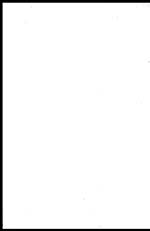Medicine - Vaccination > 1872-1903 - Report on vaccination in the Hyderabad Assigned Districts > Vaccination Hyderabad 1890-1903 > 1889-1890 - Report on vaccination in the Hyderabad Assigned Districts for the official year 1889-90
(35) [Page 1]
Download files
Individual page:
Thumbnail gallery: Grid view | List view
![(31) [Page 1] -](https://deriv.nls.uk/dcn17/9117/91172948.17.jpg)
Extract from the Proceedings of the Resident at Hyderabad, No. 2601 dated
Hyderabad Residency, 9th August 1890.
Read—
Report on Vaccination in the Hyderabad Assigned Districts for the year 1889.
ORDER.
Home Department, 28—1579-95 of
the 15th July 1887.
The Report on Vaccination in the Hyderabad Assigned Districts, prepared
for the first time according to the instructions
contained in the marginally noted resolution, has
been carefully reviewed by the Commissioner, and
only the following points call for any observation from the Resident.
Paragraph 5 of the report.
Re-vaccination.— The question raised by Dr. Little in paragraph 5 of his
report in connection with the superior efficacy of
vaccination direct from the cow or with newly
humanized lymph seems to be worthy of further study.
Dr. Little finds that according to his figures for the last three years the
percentage of successful re-vaccinations is lower than that shown in certain records
of the Prussian Army, and further that the percentage, instead of increasing,
largely as in the case of the Prussian Army, has been diminishing largely, and
be suggests that this may be the result of the introduction fifteen years ago of
vaccination from the cow. Dr. Little very properly puts forward this suggestion
only tentatively, for, even if our figures were more reliable than they are, it
would be necessary, before arriving at any conclusion, to take the figures of a
greater number of years and also to trace in as minute detail as possible the
extent to which vaccination from the cow was from time to time introduced, not
only in the province generally, but also in each district, so as to get some idea as to
how far the re-vaccinations now being reported on are re-vaccinations of persons
primarily vaccinated with lymph direct from the cow or with newly humanized
lymph.
It certainly would seem that if the criterion of success adopted in the
Prussian Army is that which Dr. Little lays down in his seventh paragraph as the
true criterion, viz., that " the results of re-vaccination (if it is successful) should
be similar to the perfect results of primary vaccination," the percentage of suc-
cessful re-vaccinations in the Hyderabad Assigned Districts is now very much
smaller than in the Prussian Army, especially as the tendency here is, as stated
by Dr. Little, to enter, as successful, cases which are according to that criterion
unsuccessful ; but how far this is due, as Dr. Little observes it may to some ex-
tent be, to the much earlier age at which re-vaccination is performed in the Hy-
derabad Assigned Districts, it will probably be difficult to determine. The rapid
diminution of the percentage during the last three years, if it could be relied
upon as established and its connection with the introduction of vaccination from
the cow could be more clearly traced, would be more conclusive ; but unfor-
tunately, as it appears from Dr. Little's seventh paragraph, our reports as to
success in re-vaccination are not to be relied on, the tendency being, as just
stated, to record, as successful, cases which should properly be entered as unsuccess-
ful, and as Dr. Little speaks of there having been an improvement in this respect,
it may be that the diminution in the percentage of successful re-vaccinations is
due, in part at, least, merely to the vaccinators having learned to distinguish more
correctly between successful and unsuccessful cases.
The question evidently calls for further consideration, and the Resident will
be glad to hear more of it in future reports.
The Commissioner, in discussing the opinion advanced by Dr. Little that a
low percentage of success in re-vaccination indicates efficiency in primary vacci-
nation, quotes the percentages of primary and of re-vaccination for 1889-90, which
are both lower than in the two previous years. He goes on to say "so that with
Set display mode to: Large image | Zoom image | Transcription
Images and transcriptions on this page, including medium image downloads, may be used under the Creative Commons Attribution 4.0 International Licence unless otherwise stated. ![]()
| Permanent URL | https://digital.nls.uk/91172946 |
|---|
| Attribution and copyright: |
|
|---|




